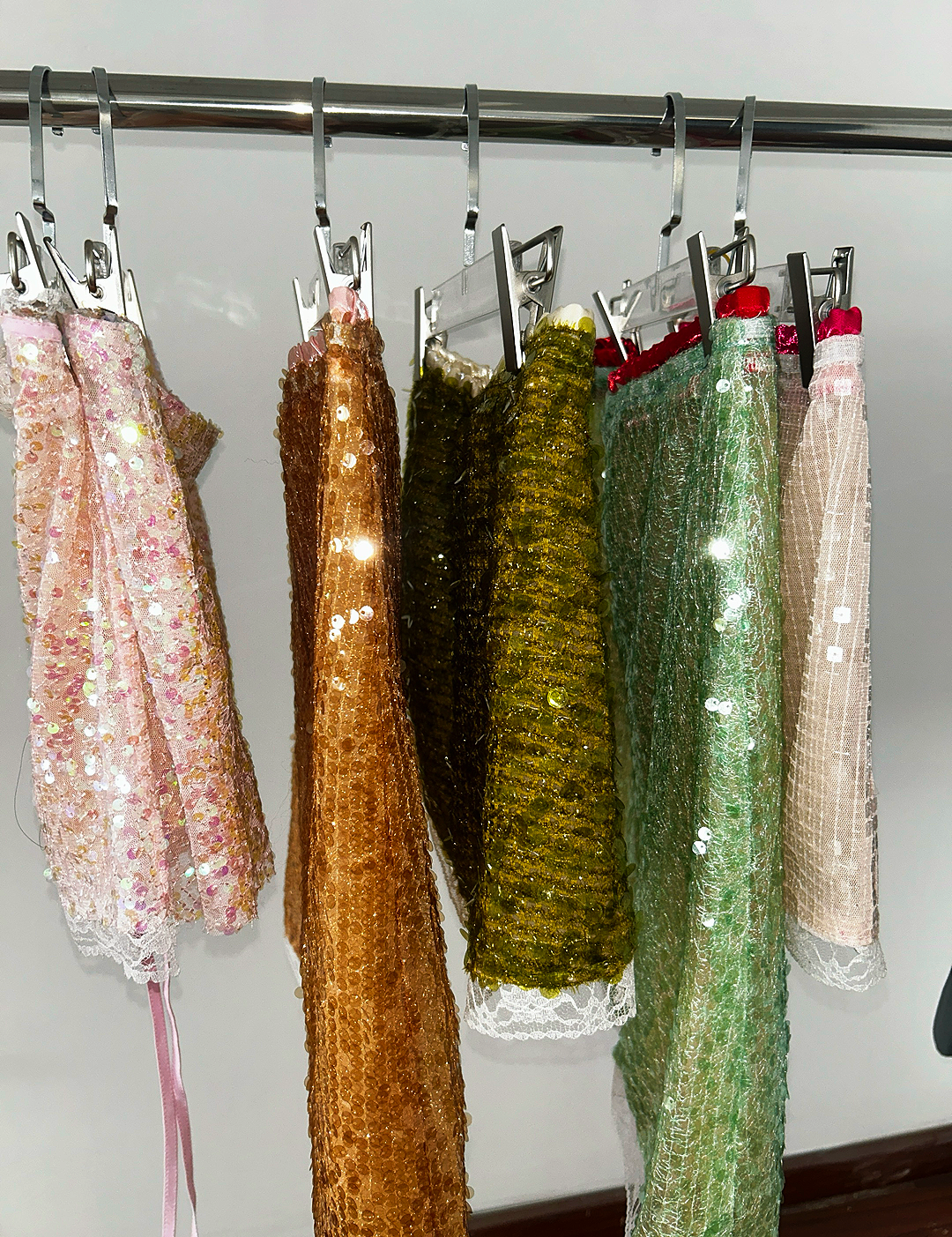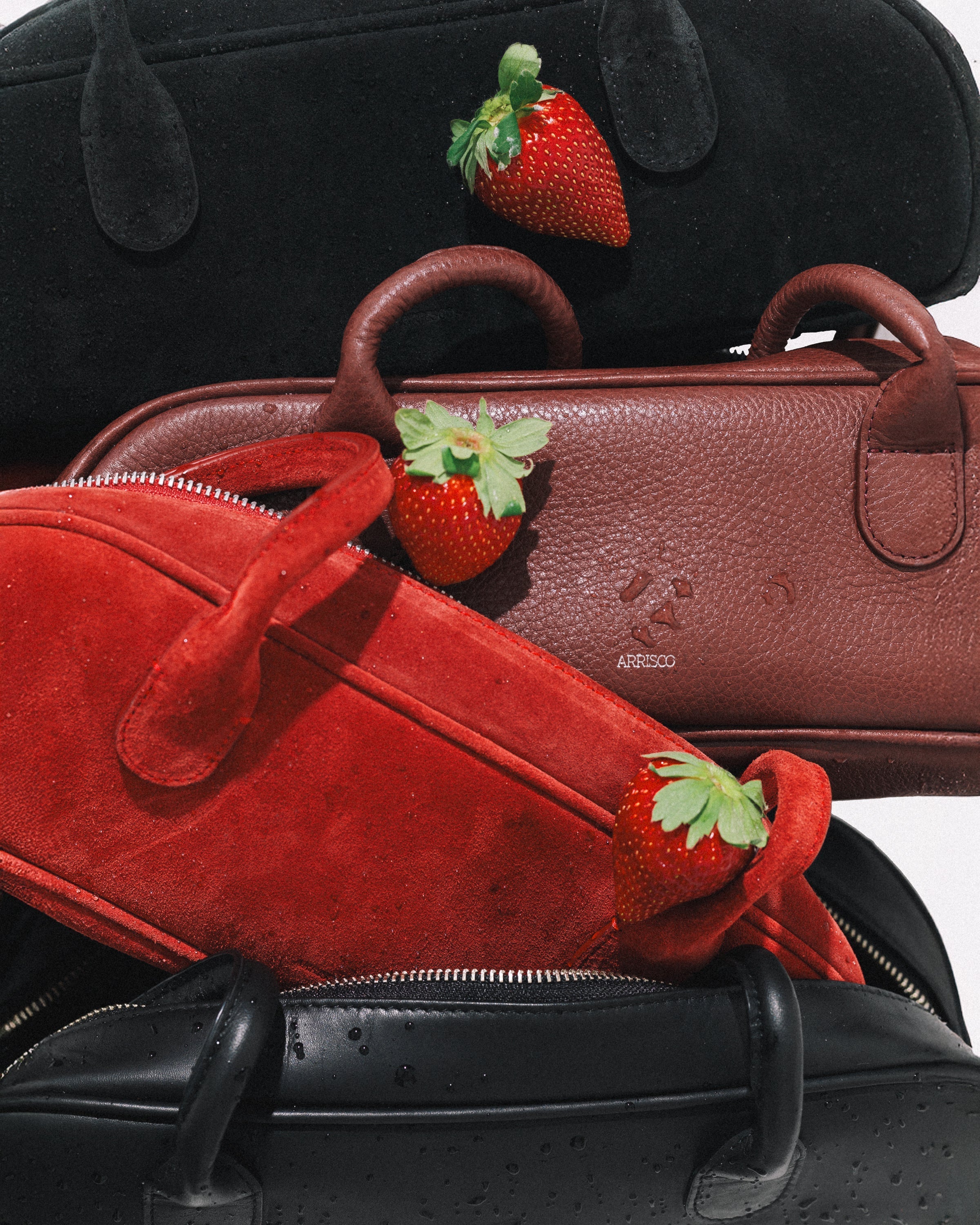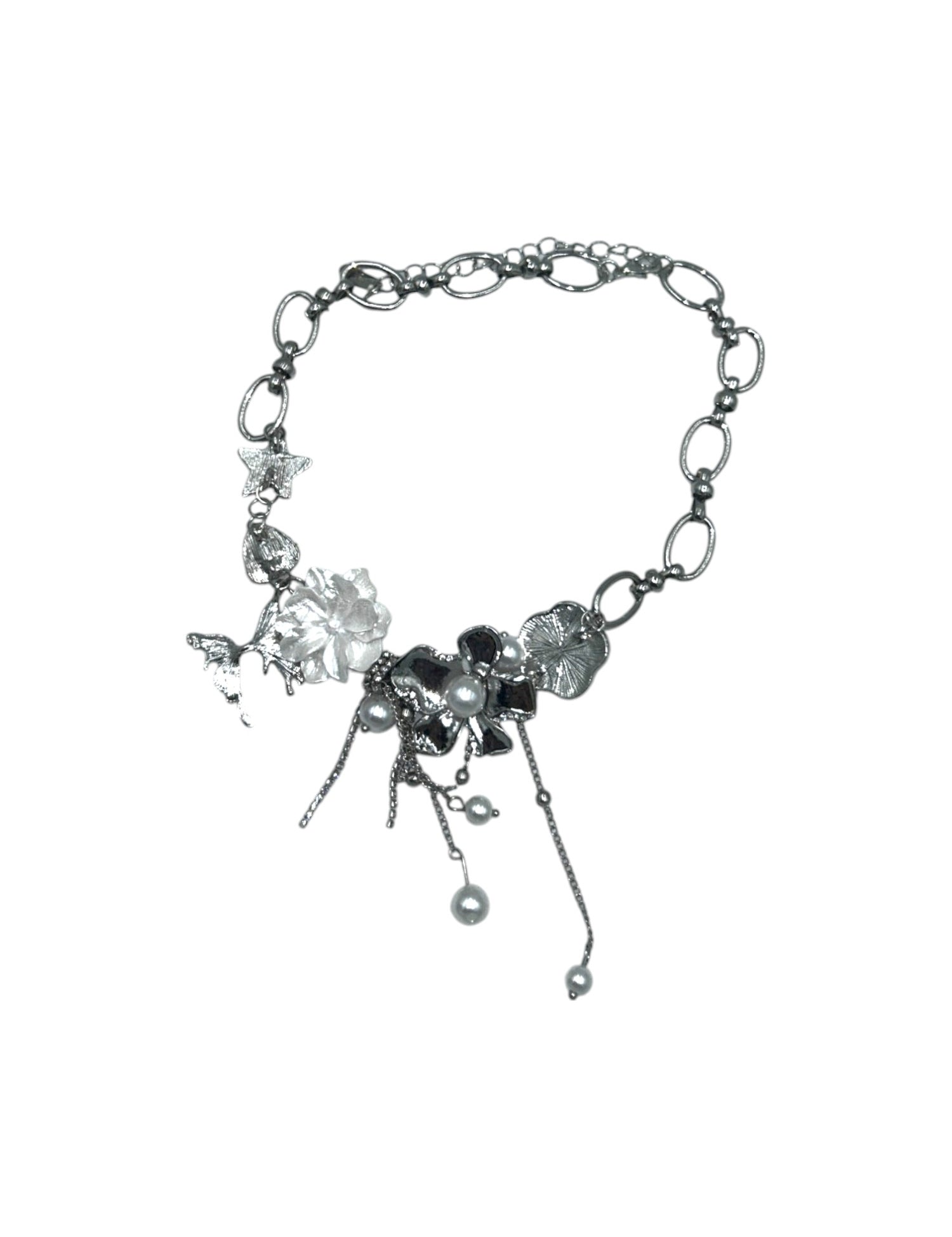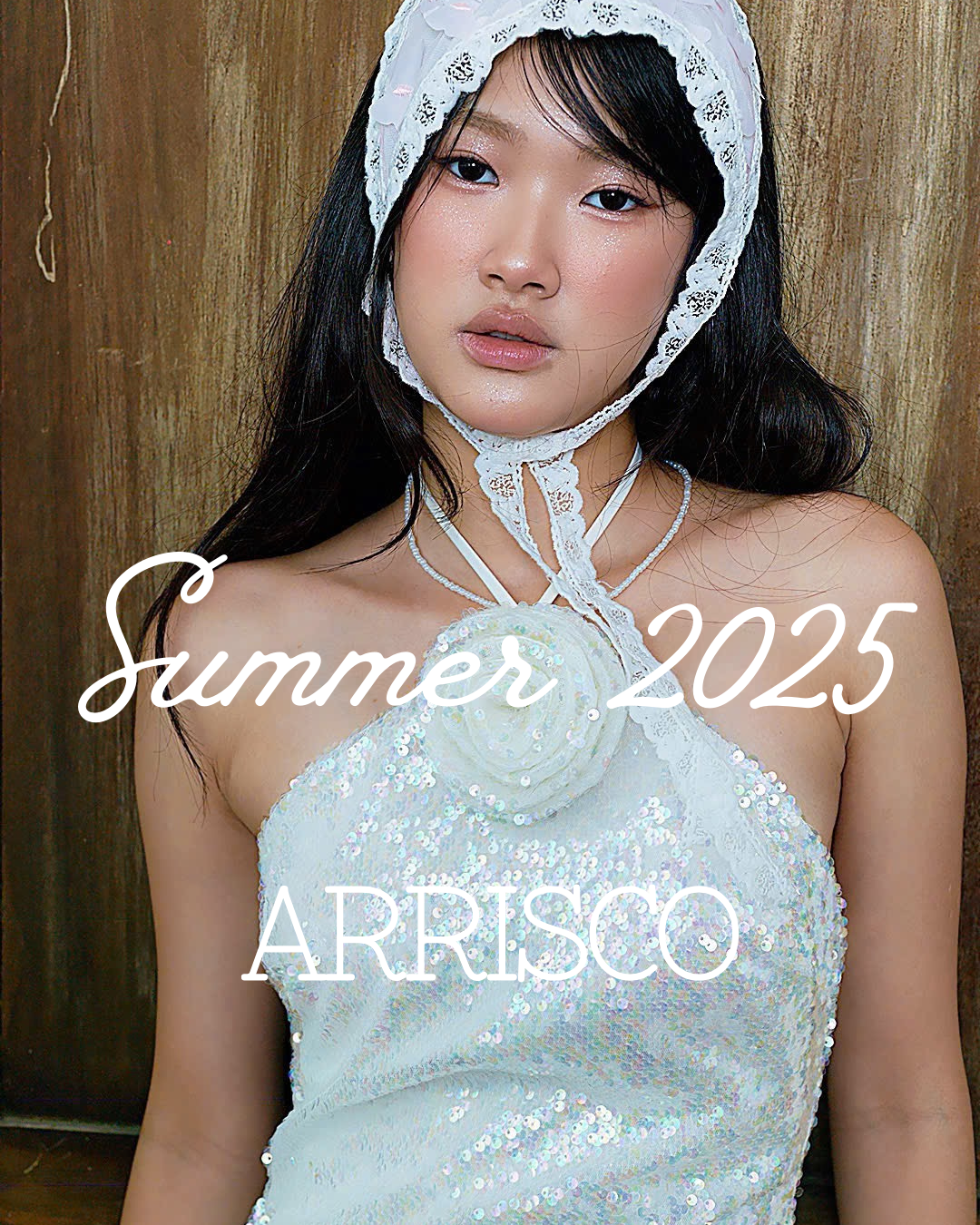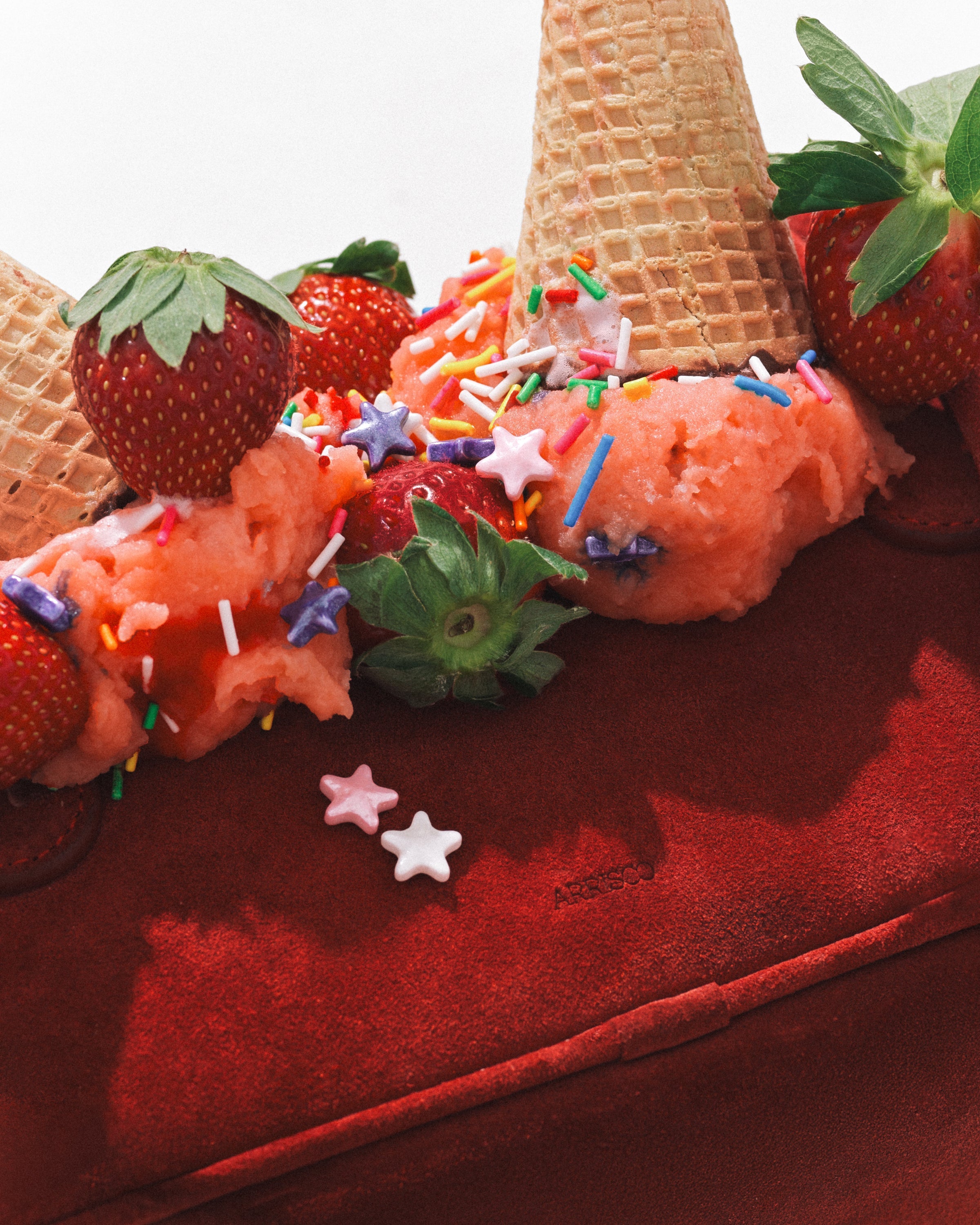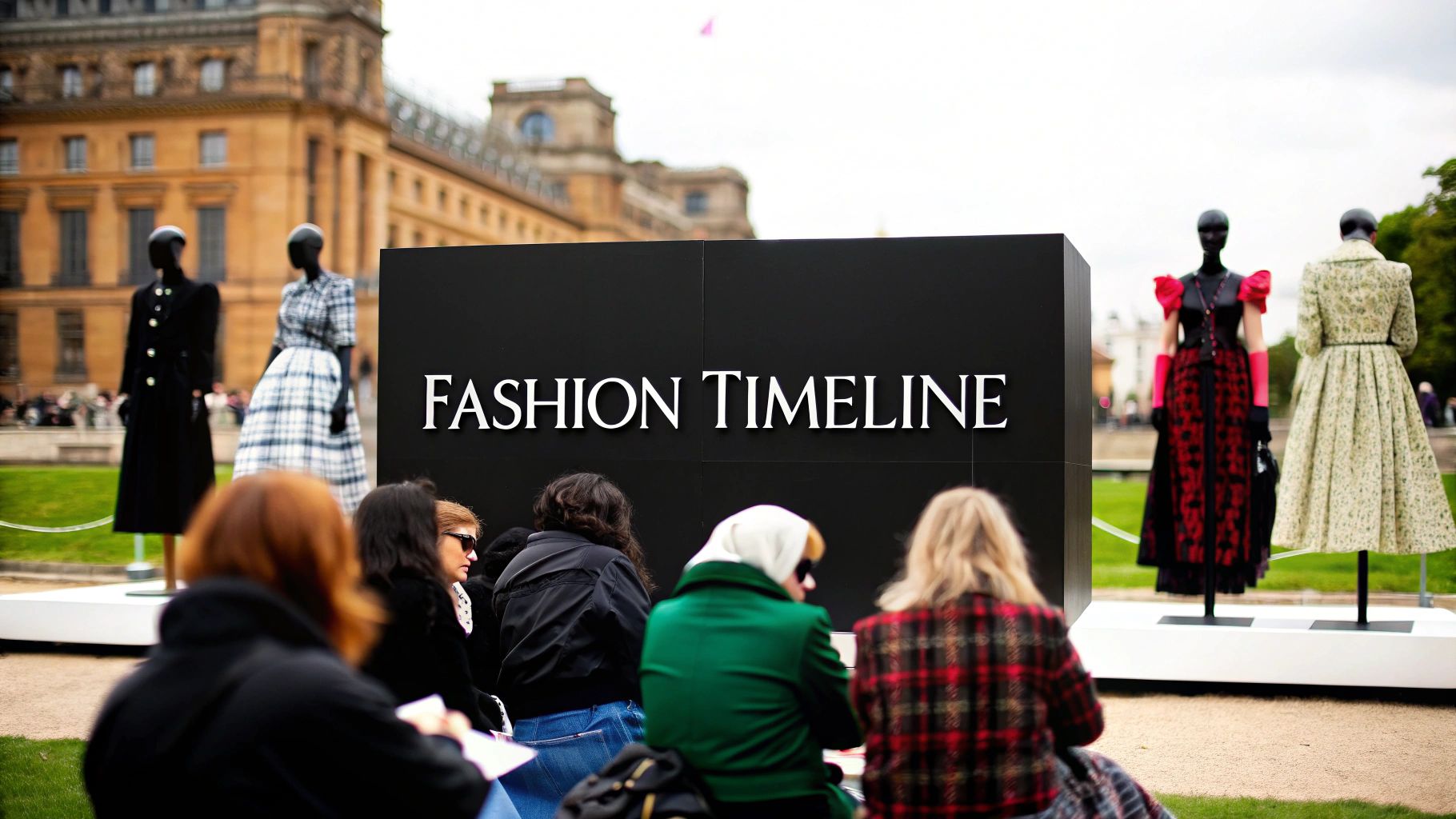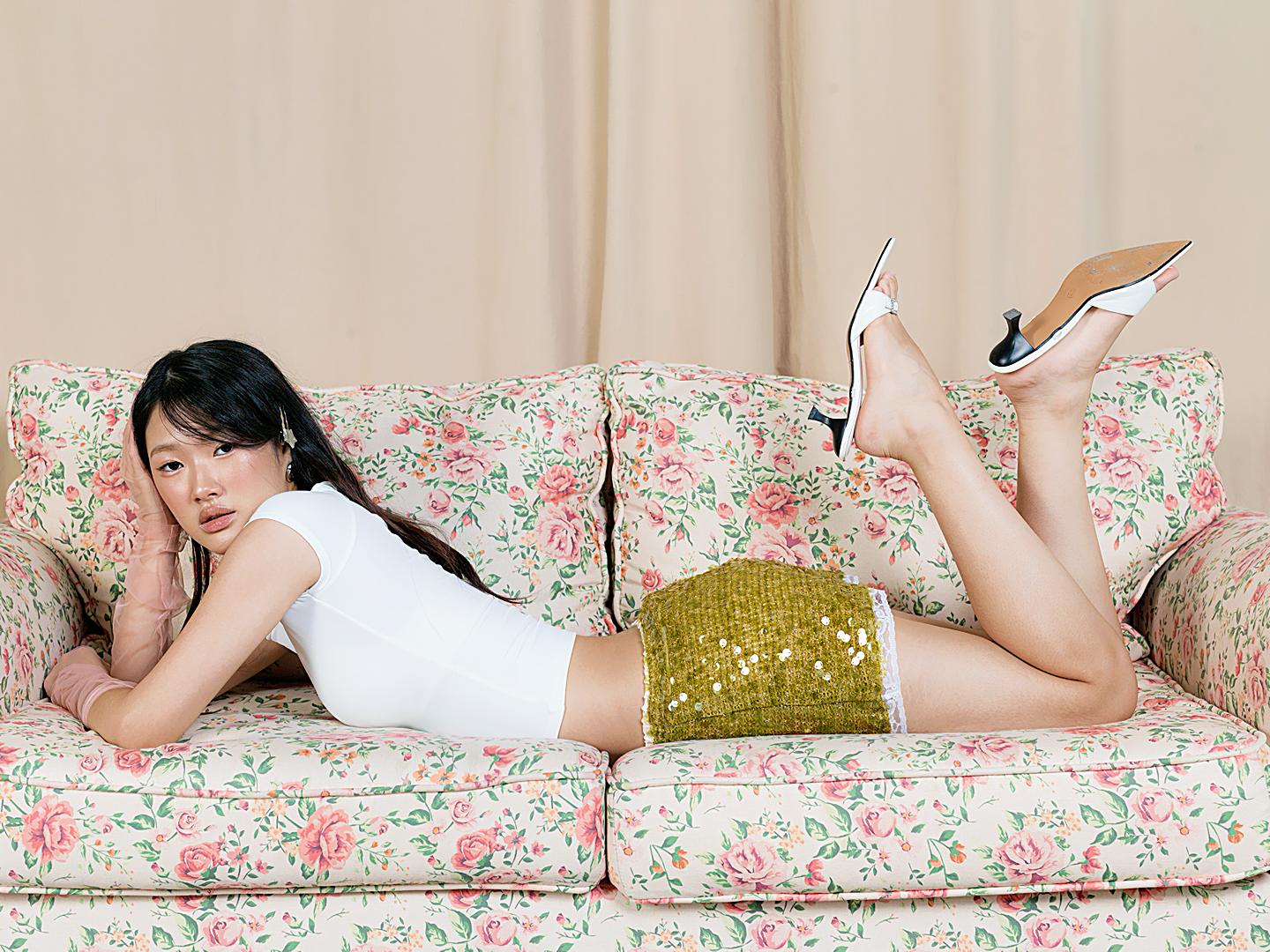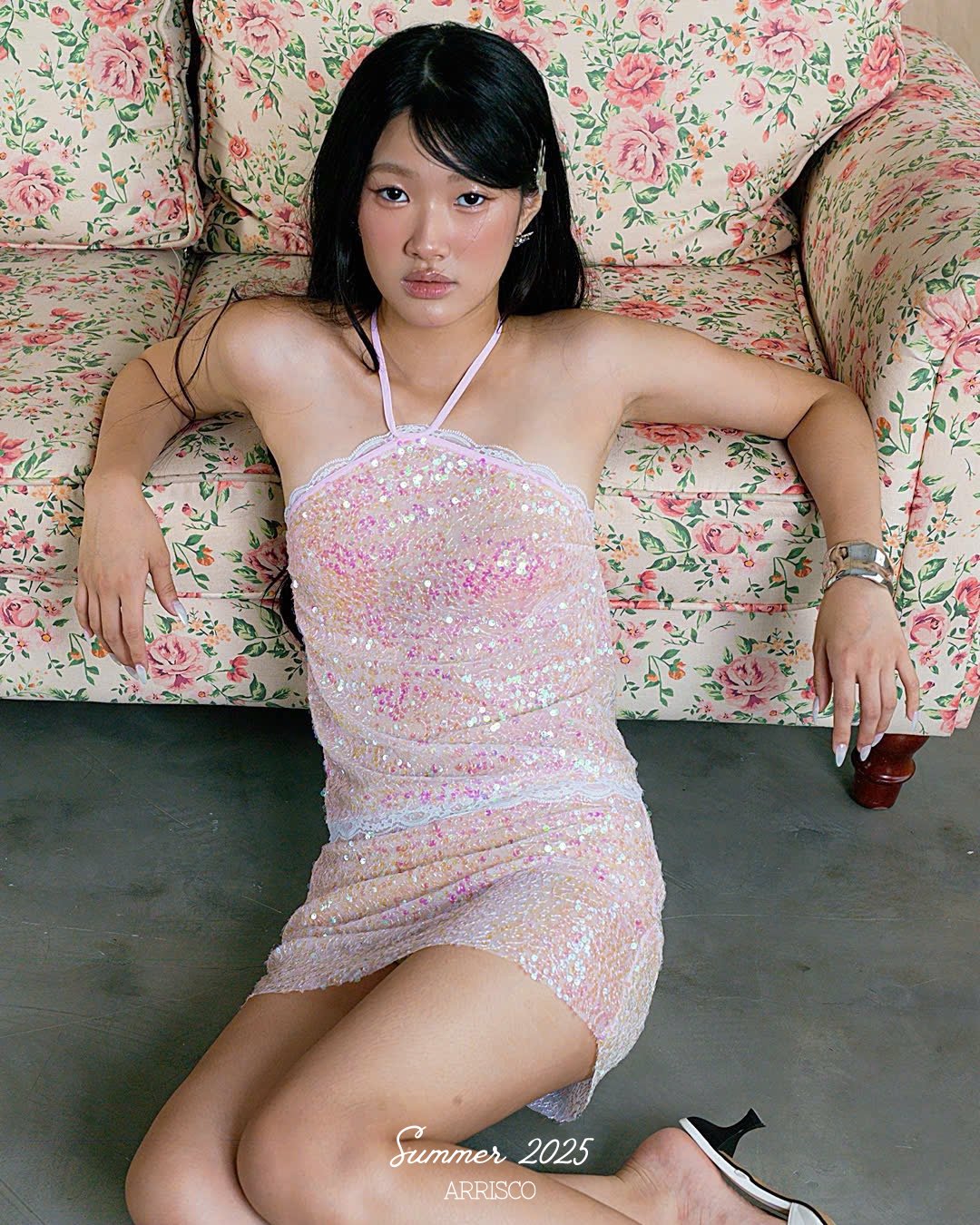For as long as there have been people, there has been fashion. It's so much more than just clothes; it’s a living, breathing reflection of the times. Our fashion history timeline is your backstage pass to see exactly how culture, technology, and seismic social shifts have shaped what we wear, from the earliest draped fabrics to today's digital designs.
Explore The Fashion History Timeline
Let's take a walk through the ages, tracing how basic human needs and brilliant innovations created the styles we recognize today. Each period wasn't just about a new look; it was a total reset in how clothes were made, what they meant, and who could get them.
-
Early Draped Clothing: Way back in 3000 BCE, it was all about function. Simple draped fabrics weren't just for modesty—they signaled your status and offered protection from the elements, creating the foundational shapes of clothing.
-
Renaissance Tailoring: Fast forward to the 15th century, and things got a lot more interesting. Tailoring became an art form. Fitted garments and over-the-top trims weren't just for show; they were a vibrant display of wealth and a celebration of a new artistic era.
-
Industrial Ready-to-Wear: The 19th century completely changed the game. With the invention of the sewing machine, mass production became possible. Suddenly, fashion wasn't just for the rich—standardized sizes and grand department stores brought style to the people.
-
Cultural Rebellion: The 20th century was a wild ride. From the Roaring Twenties flappers who chopped their hair and hemlines to Dior’s post-war “New Look” that brought back glamour, fashion became a powerful way to challenge the old guard.
-
Streetwear to Fast Fashion: The late 20th and early 21st centuries saw the power shift from elite designers to the streets. Youth culture and lightning-fast global supply chains kicked off the rapid-fire trend cycles we know today.
This journey shows how clothes became more than just garments—they became a language we all speak.
“Fashion is a living archive of human creativity.” - Amelia Richards, Fashion Historian
As fashion historian Amelia Richards points out, every stitch and seam tells a story about our shared journey. If you're as fascinated by this as I am, learning how to identify vintage clothing is a fantastic skill to develop. It's like being a detective for style!
And if you want to bring a bit of that old-school cool into your own wardrobe, check out our guide to amazing vintage-inspired clothing brands that are nailing those classic silhouettes.
Here’s a great visual that captures three of fashion’s most game-changing moments: the draped garments of 3000 BCE, the intricate tailoring of the 15th century, and the mass-produced clothing of the 19th century.
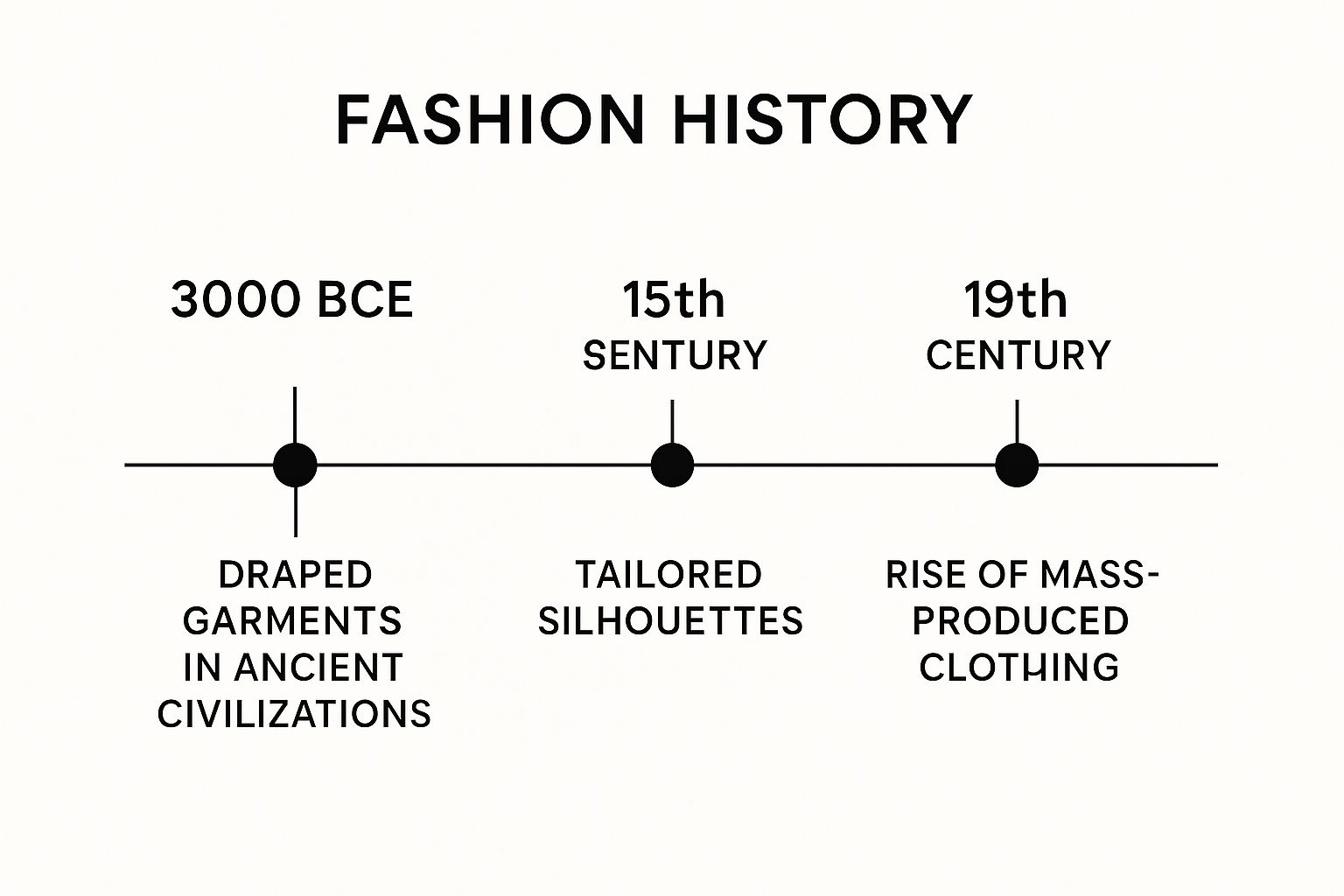
This really drives home how much the complexity of design and the sheer scale of production have evolved together over time.
Key Eras in the Fashion History Timeline
To make sense of it all, here's a quick cheat sheet! This table gives you a snapshot of the most important fashion eras, their signature looks, and the cultural moments that made them happen.
| Era | Defining Characteristics | Key Cultural Influences |
|---|---|---|
| Ancient World (3000 BCE–500 CE) | Draped garments (togas, tunics), natural fibers | Rise of empires, social hierarchy, climate needs |
| Renaissance (1400s–1600s) | Tailored silhouettes, elaborate trims, corsetry | Artistic revival, exploration, courtly life |
| Industrial Revolution (1800s) | Ready-to-wear, sewing machines, department stores | Mass production, urbanization, rise of middle class |
| Modern Era (1920s–1980s) | Flapper dresses, "New Look," mini skirts, denim | World wars, youth rebellion, women's liberation |
| Contemporary (1990s–Today) | Streetwear, minimalism, fast fashion, tech wear | Globalization, internet culture, sustainability |
Think of this as your roadmap for our journey. Each of these eras represents a major leap forward, not just in what people wore, but in how they saw themselves and the world.
What This Tells Us
Seeing the evolution laid out like this makes one thing crystal clear: fashion is a mirror. It reflects everything happening in society, from technological breakthroughs to social rebellions.
As we dive deeper into this guide, you’ll see this pattern again and again. A shift in materials, a new silhouette, a different way of making clothes—it’s all connected to the bigger picture of history. This sets the perfect stage for our next stop: the Ancient World and the Renaissance Awakening.
Ready? Let’s jump in and see how the very first forms of dress were all about communicating status and ensuring survival.
The Ancient World and Renaissance Awakening
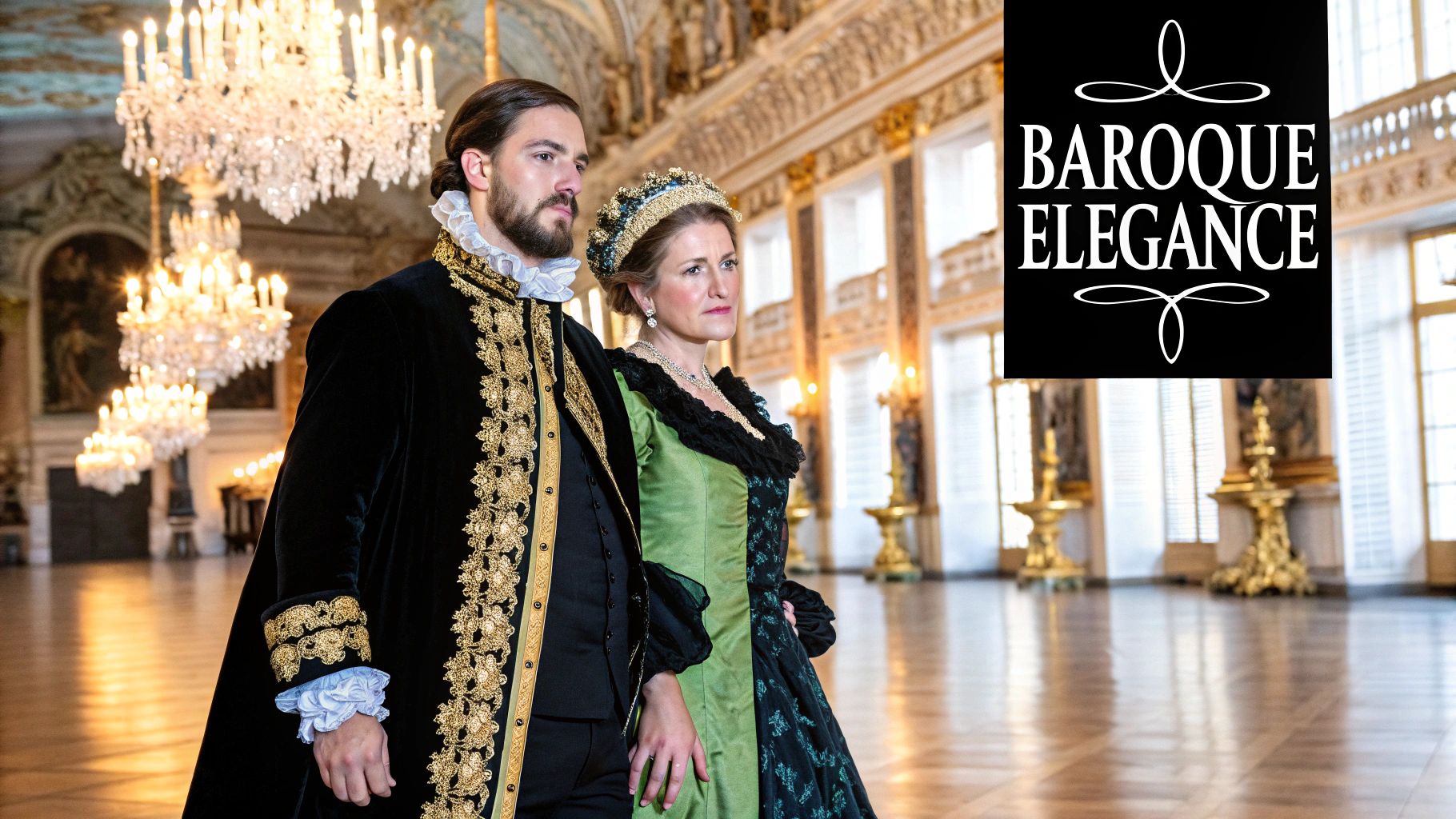
Our journey through the fashion history timeline starts in a world where clothing wasn't just about covering up—it was a billboard for your identity and social standing. In ancient civilizations like Greece and Rome, garments were stunning, draped masterpieces, often created from single, enormous pieces of fabric.
Just think about the Roman toga. It was more than just something to wear; it was a walking resume. The specific way it was draped, its color, and the quality of the fabric instantly told everyone your citizenship, your status, and your role in society. Right from the beginning, fashion established one of its core truths: what you wear tells a story about who you are.
The Structured Middle Ages
As empires collapsed and new kingdoms rose, fashion took a turn towards more structured, tailored silhouettes. The Middle Ages saw the introduction of garments that were cut and sewn to actually fit the body, a big departure from the loose, flowing fabrics of the ancient world.
In this era, clothing often became a strict uniform defined by a rigid social ladder. A peasant’s rough, simple woolen tunic was a world apart from the lush, fur-lined robes worn by the nobility. There were even "sumptuary laws" that legally dictated who could wear certain fabrics, colors, or fancy trims, making sure style stayed a clear signpost of your place in society. Fashion became a tool for keeping everything—and everyone—in its proper place.
These early developments really set the stage for everything that came after. To see how these foundational ideas ripple through time, you can dive into the complete evolution of fashion trends in our detailed guide and trace the line from ancient drapes to today’s designs.
A Renaissance Rebirth in Style
And then came the Renaissance. Suddenly, everything exploded with color, creativity, and life! This incredible period of art, science, and culture sparked a style revolution, transforming clothing into a dazzling canvas for personal expression and outrageous wealth. The focus swung from rigid social roles to individual splendor.
This was the moment when tailoring truly became a celebrated art. Silhouettes grew dramatic and bold, with brand-new inventions that came to define the entire era's look.
- Puffed Sleeves: We're talking huge, voluminous sleeves, often slashed open to show off a contrasting fabric underneath. It was pure drama.
- Intricate Embroidery: Incredibly detailed needlework using silk and real metallic threads turned garments into priceless works of art.
- Rich Fabrics: Decadent velvets, shimmering brocades, and heavy silks were the must-have materials for the rich and powerful.
- The Ruff: This iconic, elaborate pleated collar started small but grew to astonishing sizes, framing the face and acting as the ultimate status symbol.
The Renaissance was when clothing stopped being just a uniform and became a performance. It was all about showing off your individuality, power, and incredible taste on a massive scale, setting the stage for all the sartorial creativity that would follow.
This awakening cemented a new idea in fashion: style could be a powerful personal statement. The sheer creativity unleashed during this time built the foundation for fashion as we know it—a dynamic, constantly changing force, paving the way for the industrial and social upheavals that would soon change clothing forever.
How the Industrial Revolution Created Modern Fashion
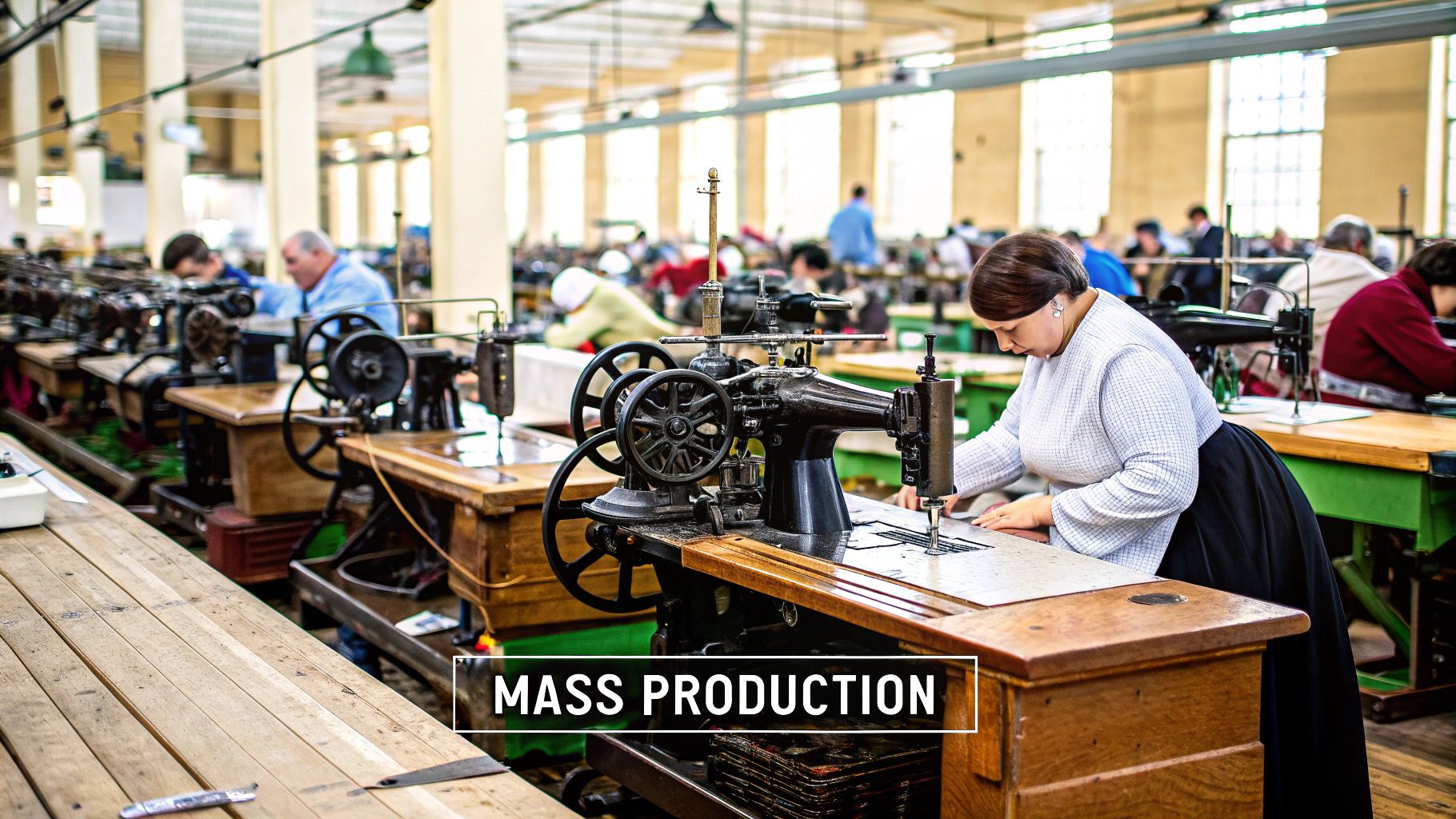
If the Renaissance gave fashion its soul, the Industrial Revolution gave it an engine. This wasn't just another evolutionary step; it was a total game-changer that completely tore up the old rulebook and laid the foundation for the industry we navigate today.
Before this incredible period of invention, every single piece of clothing was painstakingly made by hand. It's hard to imagine, but a new outfit wasn't something you'd just pick up—it was a significant investment of time, money, and labor. This made fashion the exclusive playground of the wealthy, who were the only ones who could afford a personal tailor or dressmaker.
And then, the machines arrived. Inventions like the power loom and, later, the sewing machine, completely flipped the script. It was like going from a single town crier to a national broadcast overnight. Suddenly, textiles could be churned out at an astonishing rate, and clothing could be assembled in a tiny fraction of the time it once took.
The Birth of Ready-to-Wear
This mechanical boom gave rise to a concept that feels totally normal now but was mind-blowing then: ready-to-wear clothing. For the first time ever, garments were mass-produced in standardized sizes and sold directly off the rack. Fashion was no longer just a one-off, bespoke creation.
This was a massive deal. Style began its great migration from the private salons of aristocrats to the bustling new department stores. A rising middle class suddenly had access to fashion, giving them a powerful new tool to express who they were and who they wanted to be.
The Industrial Revolution didn't just change how clothes were made; it changed who they were made for. It democratized style, moving it from the hands of a few into the closets of the many.
This era essentially created the blueprint for today's entire fashion system. The pyramid structure we see now, from exclusive couture down to accessible brands, all started here. To see how that evolved, our guide on the modern fashion hierarchy, which covers everything from haute couture to fast fashion, connects the dots from then to now.
Factories, Production, and Progress
Of course, this seismic shift wasn't just about the clothes. The 18th and 19th centuries brought the factory system, concentrating production under one roof and creating a model for mass manufacturing. This new approach let the industry scale up to meet the exploding demand, but it also came with a dark side—harsh working conditions that gave rise to the first labor movements fighting for workers' rights.
It’s the sheer ingenuity of the era that’s so amazing. A few key inventions really lit the fuse:
- The Spinning Jenny (c. 1764): This machine massively accelerated the process of spinning yarn, which had always been a major bottleneck.
- The Power Loom (1785): Automating the weaving process meant cloth could be produced faster and wider than ever before.
- The Sewing Machine (patented 1846): Perfected by Isaac Singer from Elias Howe's original invention, this device made factory garment assembly a reality.
These weren't just minor tweaks; they were the inventions that completely redefined our relationship with what we wear. This industrial boom perfectly set the stage for the dizzying style revolutions of the 20th century, a time when culture and fashion would become more connected than ever.
The Twentieth Century Style Revolution
If there was ever a time when fashion truly went wild, it was the twentieth century. It was an absolute whirlwind of social change, cultural rebellion, and sartorial drama. The old rules weren't just broken; they were completely shattered, with each decade carving out its own fiercely unique identity.
It all kicked off with the explosive energy of the Roaring Twenties and the arrival of the flapper. She was a symbol of a new kind of woman who tossed aside the painfully restrictive corsets of her mother's generation. In their place? Liberating drop-waist dresses with hemlines that shot up to scandalous new heights. This wasn't just about a new dress; it was a cultural earthquake, a declaration of independence you could see. The whole vibe of the era is perfectly captured in the iconic 1920s Gatsby style.
Of course, this radical shift was followed by the unmatched glamour of Hollywood's Golden Age, which was then cut short by the stark reality of World War II. Practicality became the new chic, with resourceful "utility" clothing proving that fashion always, always adapts to the world around it.
The Post-War Boom And Youthquake
After years of rationing and austerity, the world was desperate for a dose of fantasy. In 1947, Christian Dior answered the call. His "New Look" was a breathtaking escape from wartime sensibilities, with its soft, rounded shoulders, a dramatically cinched waist, and a gloriously full skirt that used yards and yards of fabric. It was an overnight sensation, and it completely defined the feminine ideal of the 1950s.
But fashion never stays in one place for long. The 1960s punched back with the "Youthquake," a vibrant, energetic movement that bubbled up from the streets instead of trickling down from couture houses. London suddenly became the center of the universe, giving us the miniskirt, go-go boots, and the bold, graphic styles of the mods—all capturing the rebellious spirit of a brand-new generation.
The second half of the 20th century demonstrated a major power shift in fashion. Influence began flowing up from youth subcultures and street style, rather than just trickling down from elite designers.
Punk, Power, And Pop Culture Dominance
That anti-establishment mood cranked up a notch in the 1970s with the raw, DIY attitude of punk. Think ripped t-shirts, leather jackets, and safety pins—these weren't just clothes, they were a full-throated political scream against the mainstream.
At the same time, a slicker powerhouse was taking over. Italy roared onto the scene with designers like Giorgio Armani and Gianni Versace. Their ready-to-wear lines were so successful that they helped rocket Italian fashion exports from €800 million in 1970 to a staggering €20 billion by 1990.
Then came the 1980s, which turned the volume all the way up. It was the decade of excess, defined by massive power shoulders and neon everything—a look that screamed ambition and unapologetic glamour. Style icons from this era were legendary, and you can see that lasting impact in our look at Princess Diana's timeless pedal pushers.
The century closed out with the 1990s, which acted as a sort of hangover from the 80s party, giving us two completely opposite but equally defining aesthetics:
- Minimalism: All about clean lines, a muted color palette, and elegant simplicity. This was the era of the slip dress and perfectly tailored basics.
- Grunge: A gloriously unkempt look that shambled out of the Seattle music scene, bringing with it flannel shirts, ripped-up denim, and chunky combat boots.
Looking back, each decade on the fashion history timeline didn't just give us new clothes. It created a distinct visual language that spoke volumes about the spirit of its time.
Globalization And The Rise Of Fast Fashion
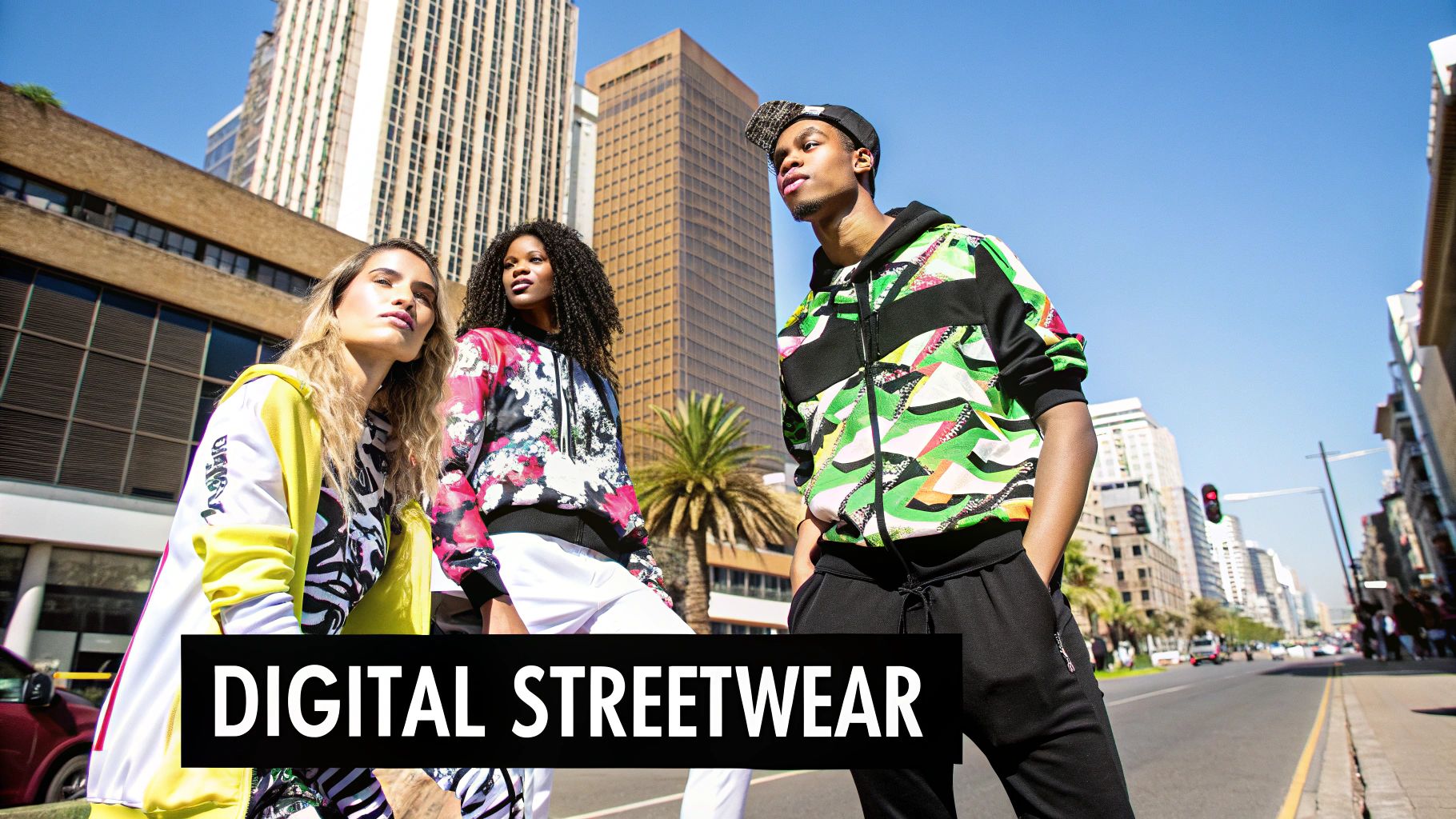
Back in the late twentieth century, fashion felt like it moved at a steady hum. Runway shows and glossy magazines set the pace, and most of us looked on from afar.
Then the web exploded, and style went global overnight. Suddenly, anyone with a flair for dressing could share a look and win fans around the world.
The Fast Fashion Phenomenon
Think of fast fashion as fashion’s jet engine. Instead of two slow seasons, brands now drop new “micro-collections” every few weeks.
This breakneck speed runs on a feedback loop:
- A trend sparks on a runway or in an influencer’s post.
- Designers and factories align across continents in days.
- Budget-friendly copies land on racks and online almost instantly.
Fast fashion flipped the script: clothes became something we buy, wear briefly, then discard.
By cranking out styles so quickly and cheaply, the apparel world ballooned. Today, the market sits at $1.84 trillion and is headed past $2 trillion by 2028. For more insight, check out global fashion industry statistics and projections.
A New Conversation Begins
Of course, speed has its side effects. The flood of cheap garments forces us to ask: what’s the true cost of our closets?
Key concerns include:
- Sustainability: Water use, chemical runoff and mountains of textile waste.
- Ethical Production: Long hours and low wages for the workers who stitch our clothes.
- Consumerism: A culture that buys more, wears less and tosses the rest.
These issues sparked a spirited pushback. Learn how that debate unfolds in our guide on slow fashion vs. fast fashion. It’s a conversation that will shape every wardrobe in the years ahead.
Your Top Fashion History Questions, Answered
Jumping into the fashion history timeline always brings up a ton of questions. It's an amazing, winding story of art, rebellion, and social change. Let's dig into some of the most common questions and connect the dots on fashion's incredible journey.
What Was The Most Influential Decade In Fashion?
This is the big one! While every era left its own unique stamp, if you ask fashion experts, they'll almost always point to the 1920s and the 1960s. These weren't just decades where fashion changed; they were moments when fashion became the engine of cultural change.
The 1920s were a total bombshell. After centuries of corsets and constricting layers, fashion suddenly broke free. The decade completely torched the rigid Victorian silhouette, bringing in dropped waists, looser fits, and scandalously short hemlines that perfectly captured women's new sense of social freedom. The flapper dress wasn't just a dress—it was a declaration of independence.
Then you have the 1960s, which unleashed a full-blown "Youthquake" that turned the entire industry on its head. For the first time ever, the world stopped looking to the exclusive couture houses of Paris for inspiration. Instead, all eyes were on the electric, buzzing streets of London. This is where we got the miniskirt, go-go boots, and wild psychedelic prints that gave an entire generation a voice.
How Has Technology Changed Fashion History?
Oh, technology has always been fashion’s secret weapon. It’s the behind-the-scenes force that has triggered some of the most massive shifts in what we wear. The first major game-changer was the Industrial Revolution. Inventions like the sewing machine were mind-blowing at the time, making mass-produced, ready-to-wear clothing possible for the very first time.
The next giant leap was the invention of synthetic fibers. Suddenly, we had materials like nylon and spandex, which blew the doors wide open for designers creatively. More than that, they made clothes more comfortable, functional, and way more affordable for everyday people. It totally changed our expectations of what clothing could do.
But the most dramatic shift has been the digital one. The internet and social media cranked the trend cycle up to warp speed, created e-commerce out of thin air, and gave us the phenomenon of fast fashion. Now, things like AI-powered design tools and sustainable smart textiles are writing the next chapter.
Do Fashion Trends Really Come Back In Style?
One hundred percent. Fashion is a revolving door! There’s a popular theory known as the "20-Year Rule," which suggests that styles from two decades ago start to feel fresh and exciting again. We’re living through a perfect example right now with the massive resurgence of 90s grunge and Y2K fashion.
But here’s the key: it’s never just a copy-paste job. When a trend makes a comeback, it gets remixed for a modern audience. The core idea might feel familiar, but it's re-imagined with new fabrics, updated proportions, and styled in a way that feels totally current.
So, what keeps this cycle spinning? A few things are at play:
- Nostalgia: We have a powerful emotional connection to the styles of our youth or eras we admire from afar.
- Designer Inspiration: Creatives are always digging through the archives, looking for forgotten gems to spark new ideas.
- New Generations: What feels dated to one generation is a thrilling new discovery for the next.
Think about the high-waisted, wide-leg jeans from the 70s. They're back in a huge way, but now they're paired with crop tops and oversized blazers, not disco shirts. This constant conversation with the past is what keeps the fashion history timeline moving and makes it so much fun to watch. Fashion isn’t just repeating history; it’s riffing on it.
At Arrisco, we live for the way the past shapes the present. Our collections are all about mixing that timeless vintage magic with a modern edge to create pieces that truly tell a story. Find your next great look and get a special 10% off your first order.
Explore our newest collection and see for yourself.

